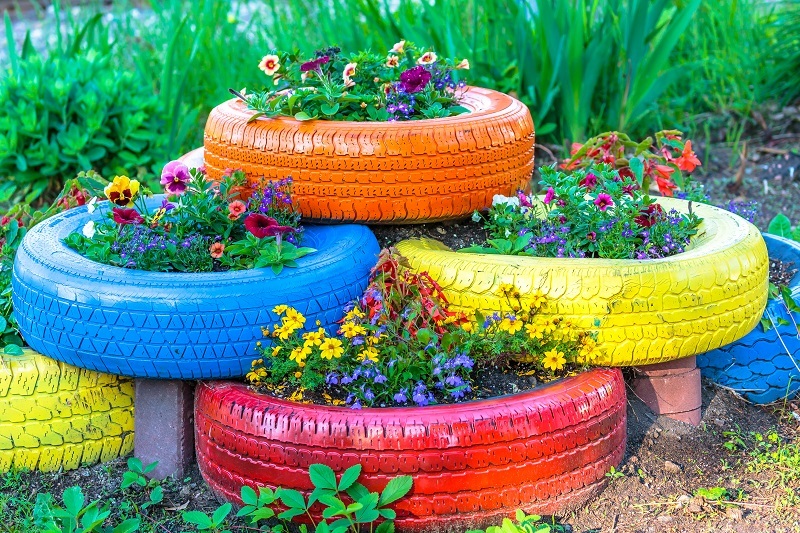Discover 3 Effortless Methods to Keep Your Flowers Fresh
Posted on 25/08/2025
Discover 3 Effortless Methods to Keep Your Flowers Fresh
Have you ever brought home a beautiful bouquet, only to watch it wilt and fade within days? Everyone loves the vibrant colors and fragrance of fresh flowers, but keeping them that way can sometimes feel like a challenge. If you're wondering how to keep your flowers fresh longer, the good news is that there are simple, effective strategies you can employ at home. In this article, we'll reveal three effortless methods that will help your flowers flourish well past their prime.
Explore our expert flower care tips to enjoy long-lasting blooms, maintain lush arrangements, and make the most of every petal!
Why Do Fresh Flowers Fade So Quickly?
The journey from farm or florist to your home is not always gentle. Once flowers are cut from their plant, they no longer have roots to draw up water and nutrients. Several factors can speed up their decline:
- Lack of water
- Poor water quality
- Bacteria growth in the vase
- Improper care (like leaving leaves submerged)
Understanding why flowers wilt helps us choose the best methods to keep flowers looking fresh. Now, let's delve into three effortless solutions you can use at home.

Method 1: Proper Preparation--Trim, Clean, and Condition
Preparation is everything when it comes to long-lasting cut flowers. Start your flower arrangement journey off right with these expert steps:
Step 1: Trim Stems at an Angle
- Use sharp, clean scissors or garden shears.
- Cut 1-2 inches off the stem at a 45-degree angle.
- This increases the surface area for water absorption and prevents the stems from sitting flat on the bottom of the vase.
Tip: Trim stems under running water or a bowl of water. This stops air bubbles from entering the stem, which can block water uptake.
Step 2: Remove Submerged Leaves
- Any leaves below the waterline will rot quickly, promoting bacterial growth that shortens bloom life.
- Strip all foliage that will sit in the water before arranging your bouquet.
Step 3: Choose a Clean Vase
- Rinse your vase with hot, soapy water before use.
- Bacteria lurking in leftover residue is a top reason why flowers fade quickly.
Why This Method Works
Prepping your flowers and container creates an optimal environment for hydration, reducing the risk of disease and maximizing longevity.
Method 2: Nourish and Hydrate with the Right Vase Solution
Simply adding tap water isn't enough. Give your flowers the perfect blend of hydration and nutrients with a homemade flower food solution. Here's how to keep flowers fresh with items you likely have in your kitchen:
DIY Flower Food Recipe
- Mix 1 quart water with:
- 2 tablespoons fresh lemon juice or white vinegar
- 1 tablespoon sugar
- 1/2 teaspoon household bleach
This combination mimics commercial flower food by:
- Providing carbohydrates for energy (sugar)
- Lowering water pH (acid from lemon/vinegar helps stem uptake)
- Inhibiting bacteria growth (bleach)
Alternatives and Store-Bought Solutions
- If you have florist packets, use one per water refill as directed on the package.
- Aspirin (one crushed in the vase) or a splash of clear soda (like Sprite) can help, but avoid using more than suggested.
- Always use lukewarm, not cold, water--flowers absorb it more readily.
Why This Method Works
Flowers need more than water to thrive in a vase. Proper nutrients and a clean environment ward off bacteria--a major cause of cloudy water and wilting blooms.
Method 3: Manage the Environment--Ideal Spots and Regular Refreshing
Where you place your bouquet and how often you refresh the water matter just as much as preparation. Take these easy steps to make fresh flowers last longer throughout their display:
The Ideal Location
- Keep arrangements away from direct sunlight, heat sources, or drafts.
- Don't place your vase near ripening fruit--fruits emit ethylene gas that speeds flower aging.
- Avoid placing blooms on TVs or radiators, as excess heat encourages dehydration.
Change the Water Regularly
- Replace the water every 2 days to keep bacteria at bay.
- Rinse the stems and vase before refilling, and re-trim stems each time for improved hydration.
Extra Tricks for Certain Flowers
- Daffodils and narcissus: Let their sap drain separately before combining with other flowers--otherwise, their juices can shorten other flowers' lives.
- Woody stems (like roses or lilacs): Gently split the base of the stem or peel back the outer layers for better water absorption.
- Tulips: Stand them upright in cold water for a few hours to encourage straight stems.
- Orchids and tropical flowers: They prefer distilled or rainwater whenever possible.
Why This Method Works
Minimizing stress from heat, light, and gas, plus regular water changes, creates a steady, inviting environment for your bouquet.
Bonus Tips for Keeping Flowers Fresh Longer
- Mist the petals with water occasionally for hydration (but avoid soaking leaves and stems).
- If any flowers wilt or go bad, remove them immediately--they will speed the decline of nearby fresh blossoms!
- For travel or transport, wrap stems in damp paper towels and re-cut stems before placing them in water again.
What About Freshness for Dried and Artificial Flowers?
While dried and artificial flowers don't require water, proper care can keep them looking great. Dust regularly, avoid moisture, and keep away from direct sun to prevent fading.
Common Mistakes to Avoid When Caring for Flowers
- Neglecting stem trimming after purchase or water changes
- Leaving foliage below the waterline
- Using dirty vases or ignoring bacteria growth
- Exposing flowers to extreme temperatures or drafts
Avoiding these pitfalls will help you enjoy longer-lasting flowers and more beautiful arrangements at home.

Frequently Asked Questions About Keeping Flowers Fresh
How long should cut flowers last with proper care?
It depends on the flower type. Most fresh cut flowers will last 7-10 days, but with excellent care, some (like chrysanthemums or carnations) linger for up to two weeks.
Can I use old flower food packets for new arrangements?
Yes, as long as the powder inside the packet isn't hardened or clumpy. Too much moisture exposure will reduce their effectiveness.
What should I do if the water turns cloudy or smells?
Replace immediately, rinse the vase and stems, and prepare a fresh flower food solution.
What flowers last the longest?
Carnations, chrysanthemums, alstroemeria, and lilies are famously long-lived, especially when you follow the methods above.
Summary: Enjoy Beautiful Blooms Longer
Bringing the joy of fresh flowers into your space doesn't have to be fleeting. With these three effortless methods to keep your flowers fresh--from trimming and cleaning, to the perfect hydration solution and smart environmental choices--you'll enjoy remarkable, lasting bouquets. Remember:
- Prepare your flowers and vase right from the start
- Feed and hydrate with the ideal water mix
- Regularly refresh the water and respect their environment
Pair these tips with our bonus suggestions for ultimate results. Keeping flowers fresh is easy when you know how! Now you can display stunning arrangements throughout your home and savor the beauty of nature every day.
Share these tips with friends and family and help them discover how to keep their flowers fresh and vibrant longer!
Latest Posts
Discover 3 Effortless Methods to Keep Your Flowers Fresh
Tips for Keeping Your Cut Flowers Fresh and Vibrant
Extend the Life of Your Poinsettias







